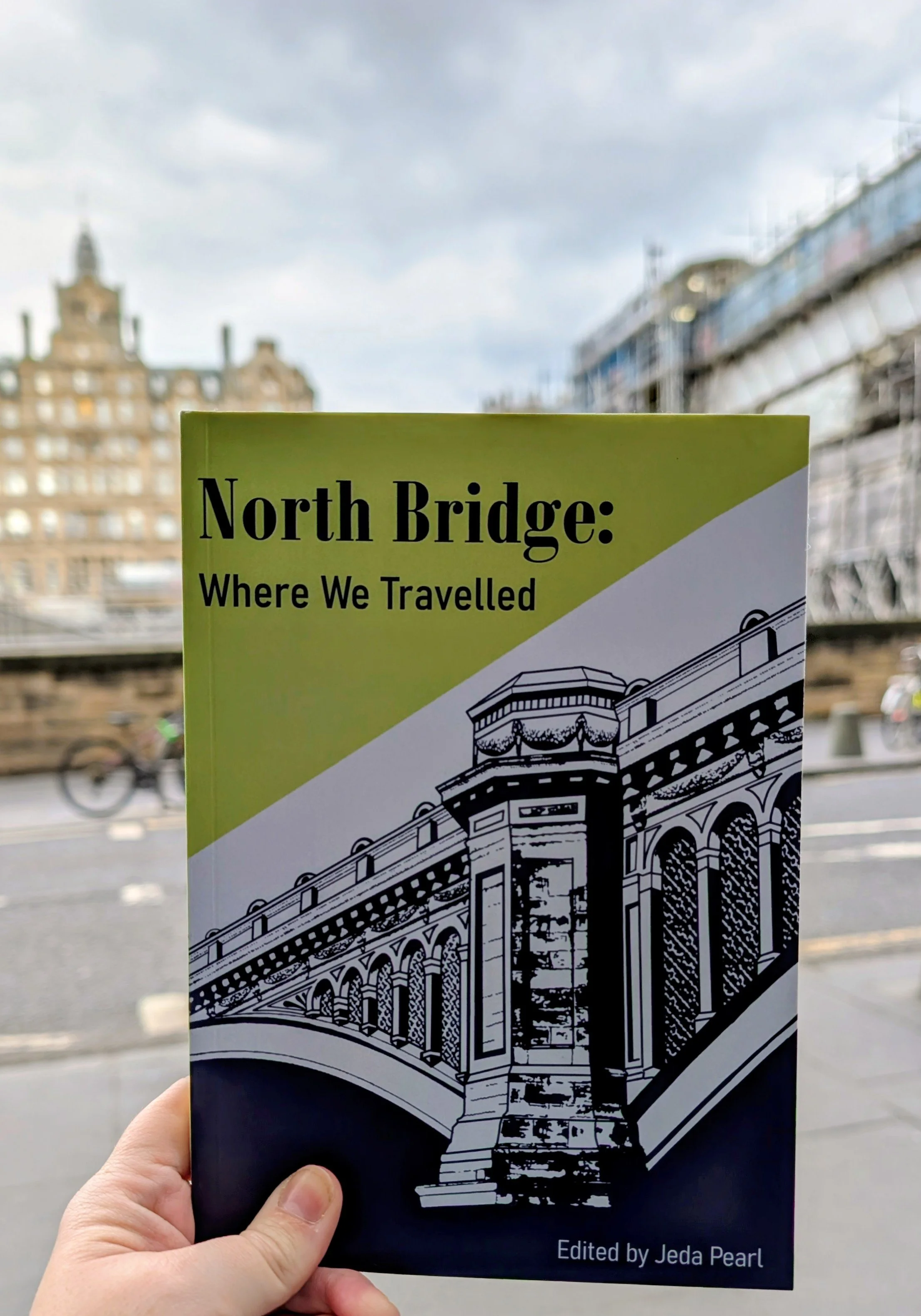Edinburgh’s North Bridge
Last week I joined a tour with Invisible Cities Edinburgh all about Edinburgh's North Bridge.
Invisible Cities are working together with the Edinburgh City Council and Balfour Beatty to create a tour all about the ongoing refurbishment of the North Bridge.
The Category A listed structure links the historic Old Town to New Town, and has undergone a transformative refurbishment since 2018.
Some parts of the bridge had not been accessed for over 125 years and at the moment is estimated to cost £37 million to complete. If you have lived in Edinburgh, you'll know that the construction work and road closures are an ongoing problem and the expectation is that the work will continue until summer next year.
This led me down a rabbit hole researching the history of the North Bridge.. which in turn led to the content of this blog post.
History of the bridge:
In October 1763, Lord Provost Drummond laid the foundation stone for the new North Bridge. The complex engineering project had begun; it seemed the best option was to create a bridge across the valley and over the east side waters of the Nor Loch. The watery horrors of the Nor Loch “North Loch” was drained and re-landscaped and today it is home to the well manicured Princes Street gardens.
The New Town development was expanding and James Craig’s plan was underway - the New Town grid system centered around George street was appearing. Grand houses for the wealthy were being built and residents would be travelling into New Town more often.
Building contracts and construction did not happen until two years later, with the initial costs for the construction costing the council £10, 140 . The design was commissioned by architect William Mylne and finally, by the beginning of 1769 the bridge was opened for pedestrians.
It should have been a celebration for Edinburgh, the design of three tall main arches and a few smaller arches made the bridge fit for the city of Enlightenment.
However by the end of summer 1769 a major design flaw was realised.
The large side walls (south end of the bridge) gave way and led to a partial collapse, leading to the tragic deaths of five people. Rescue efforts were tense and workers were digging day and night in search of bodies. It was discovered through a full inquiry that the speed of construction and a poorly calculated estimate of the foundations led to the disaster.
Due to the disaster, the local people as you can imagine were very timid and afraid of using the bridge and it would be another five years before the bridge would reopen. Throughout the 19th century the bridge was popular with the growing population and more structural support was needed to accommodate the high volumes of traffic.
The bridge was later widened and improved in 1894, which was also aided by the rapid expansion of rail travel. Underneath the bridge is the bustling Waverley train station and in 1901 the famous Balmoral Hotel was opened (originally named The British Station Hotel).
The Scotsman
At the other end of the bridge was the headquarters for The Scotsman newspaper. The lavish building cost in todays money "£55 million to build and the headquarters opened its doors in 1904. The upper levels of the building were used for management and administration, adorned with marble pillars and wooden hand carved panelling.
The Scotsman steps at the side of the building provide access down to Market Street below. The direct access from Market Street to the building was an ideal distribution outlet for the newspapers to be packed directly onto the trains at Edinburgh Waverley.
The printing house that took up the entire basement and initially the Scotsman newspaper was a weekly paper and at it’s height in 1865 the distribution had risen to 17,000 copies each day.
Now the Scotsman is home to a grand hotel and art deco themed cinema.
I do wish they would clean up the marble steps, the art deco design tiles and steps are beautiful and are only open in daylight hours.
Invisible Cities
Gayle, our guide, was informative on the history of the bridge, and highlighted the importance of bridges making connections - metaphorically and in a practical sense. She drew attention to the fact that many people in homeless situations can seek shelter underneath bridges. Invisible Cities are a social enterprise which help train and educate people affected by homelessness as tour guides in their city. I will leave a list of their tours across the UK here.




